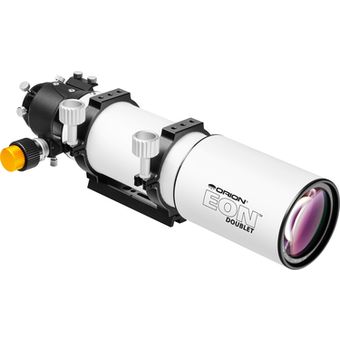When you make a purchase through my links, I may earn a small commission at no extra cost to you. You can learn more on my
Disclosure page.
A portable telescope is great for stargazing when on the move. You don’t want something that’s chunky and difficult to move around taking up the limited space you might have. Here’s what I’ve come to learn so far about choosing a telescope to take with you.
When you’re in the outdoors in a dark place the stars are brighter. It’s the ideal place for stargazing and to use a telescope to view deep sky objects and to get ultra-sharp images.
Here’s what I’ve discovered…
Best travel Telescopes [What to look for]
For the best travel telescope, look for an instrument that’s lightweight, compact, quick to set up, and easy to pack when you’re on the move. You’ll also want a neat carry bag to hold and protect everything. And a set up that is going to give you awesome views, which includes a decent tripod.
Many telescopes marketed for travel are refractors. I wrote about these types in my article on reflectors vs refractors. In answering what is the best portable telescope for travel, refractors come highly recommended…
Price of a Telescope for Travel
You can pick up a cheap portable refractor for under $100. But, it’s worth paying more to get the most satisfaction from your investment. While on the move, you’ll want something easy to pack and go but also optics that make it worthwhile.
What is the best portable telescope?
Refractors make the best portable telescope for stargazing because of their lightweight compact design. Dickinson in his practical guide NightWatch, recommends the apochromatic refractors, in the 4-inch or less range.
While you can get this size in the cheaper achromatic refractors, which are also easily portable, rather than travel telescopes, Dickinson reckons these are more for suburban or city viewing. The apochromatic type combine three or more lenses made from materials that help to correct chromatic aberration and so give you better deep sky views and ultra-sharp imagery, which you’ll appreciate after travelling to dark sky locations.
In this range, Orion offers an 80mm (3″) doublet apochromatic…
Orion EON 80mm ED Doublet Apochromatic Ref…
The Orion EON 80 ED Apochromatic Refractor packs a big punch in a small package. Featu… [More]
You’ll need to add a good tripod, available separately unless you have one already.
Moving upmarket …
The Orion ED80T Triplet Apochromatic Refractor is lightweight, having a tube made of carbon fiber. It has great reviews regarding its portability.

Orion 9534 ED80T CF Triplet Apochromatic Refractor Telescope
Available at Amazon (affiliate link)
I wrote about Celestron vs Orion, if you’re keen to compare Orion to this other common brand on the market.
Another recommendation by Dickinson is the Celestron Nex Star 6 SE. The one shown below comes with a smartphone adaptor. This is a go-to computerized telescope, a type I cover in my article on planet viewing from your backyard.

Celestron – NexStar 6SE Telescope
See it at Amazon (affiliate link)
It is a Schmidt-Cassegrain, a catadioptric telescope, meaning it combines a mirror and lens. This makes for a more compact instrument.
Carry bag
For a carry bag, there are a few options. Here’s one to consider…
Rhino BagMate R8 Pro Telescope Bag will suit the Celestron Nex Star 6 SE. It’ll accommodate 4″,5″,6″, & 8″ optical tubes and accessories. Check it out at Amazon…

Rhino BagMate R8 Pro Telescope Bag (affiliate link)
Looking for the best telescope for ‘stargazing on the go’ can be overwhelming with all the choices available.
Downsides of most travel telescopes
The main downside of most travel telescopes is the flimsiness of the tripod that comes with them. It’ll cause problems from finding your object through the finderscope to unstable views of your object in the sky.
With a shaky tripod, you won’t be satisfied, believe me – check out my article about a telescope tripod upgrades.
Best cheap telescope for stargazing that’s portable
Looking for something cheaper…

Celestron Travel Telescope with backpack
Available at Amazon (affiliate link)
Celestron makes this popular portable telescope for travel, which is available at Amazon. It’s a 70mm refractor that comes with a telescope backpack. You might find the tripod flimsy — but I wrote about hacks you can use to help stabilize these.
You can also get the Celestron 700mm refractor from High Point Scientific!
For more budget telescopes, see my article with examples at the low end of the price range. Or, consider getting a good set of binoculars that are great for so many reasons.
Info sources
- Nightwatch, a Practical Guide to Viewing the Universe by Terence Dickinson (available at Amazon, affiliate link). This book contains sky charts and has a spring binding so is practical for use on location.
- Astronomy Australia Year Guide to the Night Sky by Wallace, Dawes, and Northfield (affiliate link) includes all sky maps and much more information for stargazing down under






